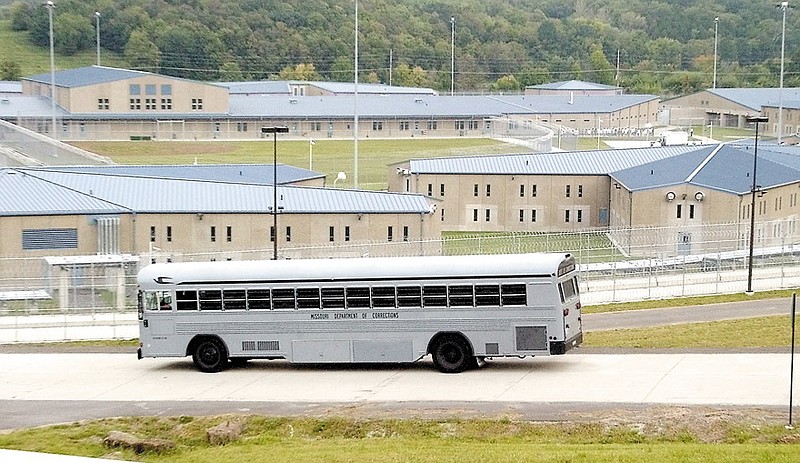Testing in recent weeks has turned up more cases of COVID-19 at Jefferson City Correctional Center, which has now surpassed the size of the outbreak at neighboring Algoa Correctional Center.
As of Oct. 13, there had been 31 active cases among offenders and 20 active cases among staff at JCCC, according to Missouri Department of Corrections COVID-19 data.
On Wednesday, those numbers had risen to 115 active cases among offenders and 42 active cases among staff at JCCC. Five other offenders had recovered, as had 16 staff members.
At Algoa, the active case count had also risen, though it was down slightly Wednesday from earlier in the week.
On Tuesday, there had been 95 active cases among offenders and 23 active cases among staff. On Wednesday, there were 86 active cases among offenders at Algoa and 24 among staff. Thirteen offenders had recovered, as had 11 staff.
DOC suspended visiting at Algoa until further notice Sept. 24 because surveillance testing for coronavirus had found a positive case in an offender.
At that point, since the start of the pandemic, the facility had previously had two staff and an offender test positive - all of whom had since recovered.
DOC spokeswoman Karen Pojmann said an increased coronavirus presence in wastewater from the prisons in Jefferson City prompted expanded testing efforts - first, to identify housing units where an outbreak may be underway, and second, to identify cases within those housing units.
There was more testing at JCCC between Oct. 8-16, Pojmann said, and the department "saw an increase in positive test results over the weekend."
Offenders who test positive, and their close contacts, are housed in isolation units. "They aren't sharing housing wings with offenders who have tested negative," Pojmann said.
"All staff who tested positive are in isolation at home," she added.
Offenders who test positive are isolated until they test negative, according to the DOC's post-test procedures.
Staff who test positive go home on leave and must test negative twice before returning to work.
All staff who have close contact with someone who has tested positive stay home for two weeks of quarantine.
Pojmann also said there was testing Oct. 13 and 15 at Fulton Reception and Diagnostic Center.
The case count there had risen Wednesday to 109 active cases among offenders and 11 active cases among staff.
Forty-four offenders at FRDC had recovered, as had 13 staff members.
As of Oct. 13, there had been 63 active cases among offenders and seven active cases among staff at FRDC.
At Cremer Therapeutic Community Center in Fulton, as of Wednesday, there were no active cases among offenders and three active cases among staff. One other staff member had recovered, as had ten offenders.
At Tipton Correctional Center, as of Wednesday, there were 61 active cases among offenders, and 18 active cases among staff.
Two DOC staff members have died after testing positive for the coronavirus in recent weeks, Pojmann confirmed Wednesday. She noted no identifying information about the deceased staff members - including the locations where they were employed - would be released to the public, in the interest of protecting they and their families' privacy.
The DOC has reported all information to local and state health departments, Pojmann said.
California Democrat editor Austin Hornbostel contributed information to this article.

